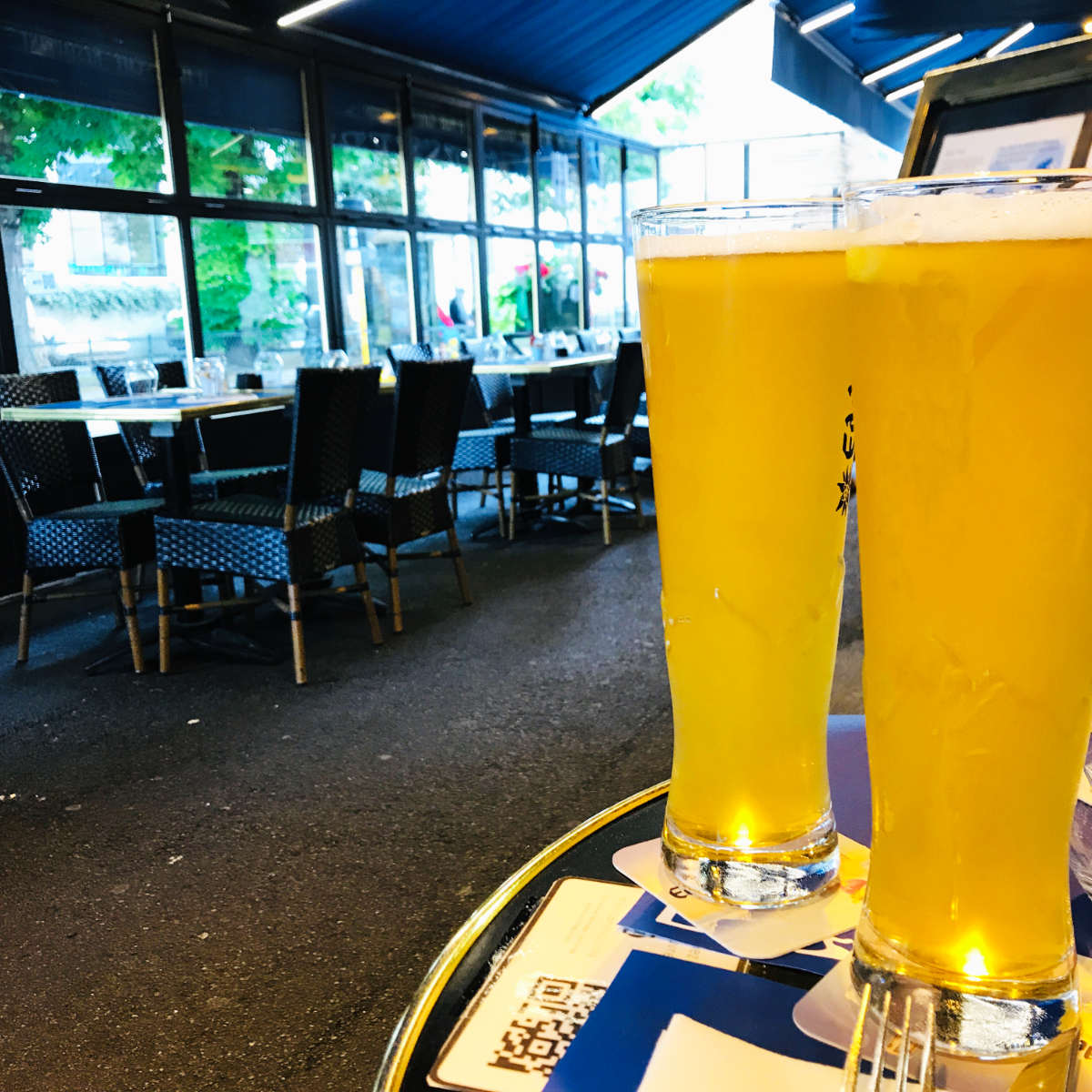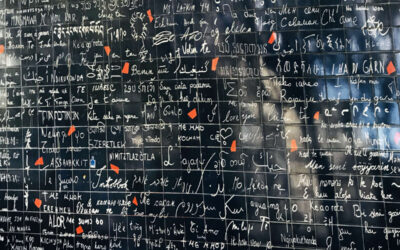The French are known for their love of food and wine, so it’s no surprise that there is a rather elaborate way to toast the occasion and say “cheer” in French.
The roots of this tradition are not entirely happy, dating back to the Middle ages when poisonings, especially among nobility, were somewhat common.
The idea of toasting someone and banging the cups somewhat violently, was a way to assess the nature of your drinking partner. And it also would make some of the poison to fall from the cup onto the other’s meal. A trustworthy person would continue eating, while a person with nefarious intentions would not.
Regardless of the origins of the tradition of saying a toast, there are several ways to say cheers in French, so you can make any gathering a little more festive. So let’s get to it, shall we? Allons-y!
☞ READ MORE: French travel phrases you need for a trip to France
What to say
1. Santé! – Good health!
Santé! or Good health! is probably the most common way to say cheers in French and the most popular. If you can only remember one, this would be the one to remember.
You can also say:
- à votre santé! – to your health!
- à la santé de tous! – to the health of all!
There is a famous song by French singer Patrick Bruel that is called “À la santé des gens que j’aime” meaning “to the health of all those I love”.
2. Tchin-tchin! – Clink-clink
Tchin-tchin comes from the Chinese “qing-qing”. The original saying could mean “please please”, but these days most French people would just assume that it is about making the sound of two glasses clinking.
3. À la tienne! – To yours! (informal)
If you are toasting a particular person for a reason, eg. gotten engaged, gotten a new job, or having a baby, you might say “à la tienne!” It literally means “to yours” as a short way to say “best wishes to you, good health, all the best, etc.”
4. À la votre! – To you! (formal or a group)
“À la votre!” is the same as “à la tienne“, but while “tienne” refers to one person who you are rather close to, “votre” is for someone who you may be on more formal terms with, such as a co-worker or employer.
It could also refer to a group of people, as “votre” is also used when there is more than one person being referred to.
5. On trinque! – Let’s cheers!
The French verb trinquer literally means to clink. On trinque means “let’s cheers!” and clink your cup.
6. Cul Sec! – Bottoms up!
Saying “cul sec” in French literally translates to “a$$ dry” and means you should down your drink in one gulp. This is basically the equivalent of the English phrase “chug!” or “bottoms up!”.
This is used for shots of alcohol or beer, usually at a bar or a really raucous beer party. It isn’t the most elegant of French sayings in all fairness, I couldn’t leave it off the list!
7. In other languages
Being in Europe, it is rather common in France to hear “cheers” being said in other languages than French. Some other expressions to say cheers in the language of a neighboring country are:
- Prost! – German
- Salud! – Spanish
- Salute! – Italian
8. Adding your own interpretation
And finally, you can also add your own version to your toast, by saying “à + phrase”. This is usually used if you are at a gathering and wish to make a toast to a life event or other significant occasion.
You can toast life, love, a person, whatever you want as follows
- À l’amour! – to love!
- À la vie! – to life!
- À tes beaux yeux! – to your beautiful eyes!
- À Sebastien! – to Sebastien!
- Aux jeunes mariés! – to the young newlyweds!
Now, just saying cheers in French is not enough, there is a whole host of etiquette that goes along with the clinking of glasses as well.
Other tips when toasting
1. Wait for the host.
Now you don’t have to be the host to propose a toast, but if you are at a dinner party, etiquette indicates that you wait for the host to stop running around before offering the toast.
Once the host has arrived, you can stand up and get everybody’s attention and face the host or person of honor and say cheers.
2. Click glasses with each person.
Similar to greeting everyone when you arrive and leave an apéro, the rule in France is to clink glasses with everyone. This rule is widely stuck to, unless of course you are at a party with over 20 people.
3. Don’t cross arms while clinking glasses.
If you are sitting around a dinner table and clinking glasses with everyone, you must avoid crossing arms with your neighbours as they all try to cheers one another. Wait for your turn, and then cheers.
4. Don’t cheers with an empty glass.
If you happen to have already finished your drink, fill it with water or another drink before offering your toast. An empty glass is not used to cheers.
5. Make eye contact.
The superstition in France is that if you must make eye contact when clinking glasses as you are toasting. Otherwise you are looking at 7 years of poor bedside relations and be unlucky in love. As you can imagine, this is one rule that French people stick to quite religiously.

The idea of looking closely at your drinking partner was also a way to check their intentions. If one of the drinkers looked away or seemed uncomfortable, this would be a sign to inspire mistrust.
6. Have a sip before placing your glass down.
After you have finished saying your cheers in French and clinking glasses with everyone, it is time to have a sip. Do not put the glass down before you have a sip, as that is also considered to be bad luck.
Giving a toast at a wedding or dinner
Now, if you are giving a toast at a special occasion like a wedding or dinner, you will “porter un toast”, meaning literally “carry a toast”. While in English we say the word “toast” as well, the origin of the word is French.
The custom dates back to the 17th-18th centuries, where in Old French, the word “toste” referred to a slice of toasted bread dipped in wine that was drunk when celebrating someone, usually the bride at a wedding.
The expression was “toster une dame” when one drank to her health, implicitly implying her beauty and her ability to have children.
When a man was getting married, he would invite his companions to drink a glass of wine in which was dipped a toste. Each person would drink in turn, leaving the last sip to the groom. These days it is no longer reserved to women, and the word “toast” has been adopted in several cultures.
Now, while you can use any of the expressions above to toast the bride and groom, a rather more elegant way would be to say: “Levons nos verres aux jeunes mariés” meaning “Let’s raise our glasses to the (young) newlyweds.”
And not to worry, all newlywed brides and grooms are called “les jeunes mariés” even if they are in their 80s. So now you know 😉

So are you mentally prepared to deliver your toast in French? If you enjoyed that article, you may like to read more French language lessons here. A bientôt!




